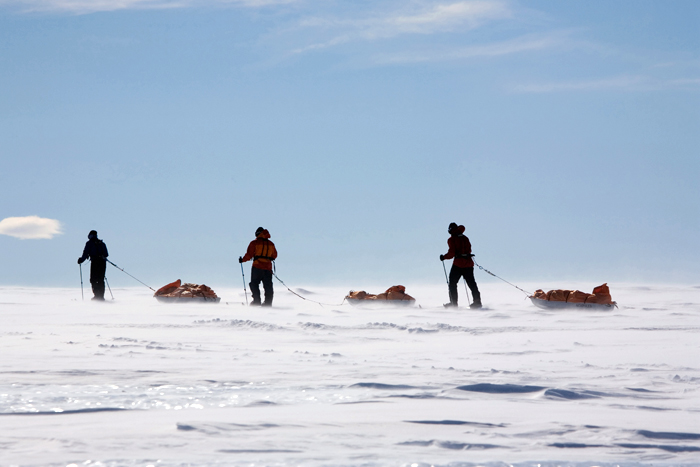|
Page 2/3 - Posted November 6, 2008
Tourism surge“What we’re seeing is not only an increase in tourism but a change in what’s coming,” said Watson, who has worked at the South Pole during 10 of the last 12 years. Instead of the grand adventurers who haul sleds hundreds of kilometers from the coast, she said, many visitors are less experienced, skiing the final 60 miles, or last degree, to the South Pole. Related Articles
More than 46,000 tourists visited Antarctica during the 2007-08 season, according to the International Association of Antarctica Tour Operators (IAATO) The surge in Antarctic tourism in recent years has been well documented. The reasons behind the increase are manifold, from the success of movies like “March of the Penguins” to renewed interest in the polar regions and their prominence in climate change. The ongoing International Polar Year “There’s this renewed interest in polar regions,” Marty said. “We’re seeing that more and more books are being written about the exploration of polar regions. The used books stores are finding it hard to maintain stocks of classics.” Antarctic Logistics and Expeditions (ALE) ALE until recently had been the only tour operator offering transportation to Pole, working out of the Patriot Hills camp in West Antarctica, with flights originating in Punta Arenas, Chile. A second company, Antarctic Logistics Centre International (ALCI) The Patriot Hills camp The only land-based operation that is a member of IAATO, ALE reported 260 clients participated in various multi-day expeditions on the continent during 2007-08. Of that number, ALE supported 92 tourists to the South Pole, 50 of them doing the “Ski the Last Degree” or fly-in trip. The South Pole trips aren’t cheap. It will cost $46,500 in 2009 to “Ski the Last Degree,” while a seven-day trip, including a flight and four-hour visit to the Pole, will set you back $37,850 for 2009. All four of this year’s fly-in packages from ALE are already fully booked. Changing timesIn the not-too-distant past, the station manager or someone like Marty would greet the visitors, provide a short overview of the station, and then give a brief tour of the facilities. Now, with the tempo of operations at the new station and its demand on Marty and others, additional volunteers sometimes have to greet the visitors Marty noted many tourists are inquisitive and well versed in polar history and science, keeping the greeters on their toes. “The program is changing and growing so fast that even some of us that are representatives are caught off guard with a question that we truly can’t answer,” he said. “It’s a far more detailed plethora of questions that we are receiving from the tourists than ever before.” Rootes said many of the tourists are particularly interested in climate change issues. He said that’s a positive aspect of the new tourism — an opportunity to educate. “We get the chance on the ground to show them what’s happening. … You can really drive home some of these issues. Hopefully the stations benefit from it, too. They’re coming in contact with some of the people helping fund their science.” |



For USAP Participants |
For The Public |
For Researchers and EducatorsContact UsU.S. National Science FoundationOffice of Polar Programs Geosciences Directorate 2415 Eisenhower Avenue, Suite W7100 Alexandria, VA 22314 Sign up for the NSF Office of Polar Programs newsletter and events. Feedback Form |



